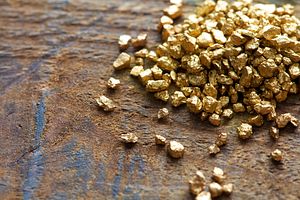The good news for Centerra Gold, the Canadian mining company that operates the Kumtor gold mine in Kyrgyzstan, is that it received a one-month extension on its emissions and waste permits last week while the annual mining plan is mired in legislative gridlock. The bad news, according to a Centerra press release, is that “there can be no assurances that such approvals and extensions will be received within the required time frame or that a suspension of operations will not be required if they are not forthcoming.”
Kumtor has seen its share of trouble over the years. Centerra wholly owns Kumtor and Kyrgyzstan owns a third of Centerra. In early 2013, the Kyrgyz parliament voted to trash the arrangement, but a replacement proposed by Centerra and the government — a 50-50 split of the mine ownership which would also entail Kyrgyzstan giving up its Centerra shares — hasn’t moved much. Meanwhile, some parliamentarians regularly call for nationalization of the mine.
In April, then-Prime Minister Djoomart Otorbaev told Parliament that the 50-50 deal wasn’t a good one as the mines reserves estimate had been revised downward. He said that a better deal could be found by pushing for more Kyrgyz influence in Centerra’s Board of Directors (Kyrgyzstan appoints three of 11 directors). The head of the Kyrgyz state-owned mining company, Kyrgyzaltyn, disagreed. Acting Chairman Kylychbek Shakirov told Eurasianet that “the possibility to get a 50-50 deal is much greater than [the possibility of] changing the board of directors. Kyrgyzaltyn only has a 33-percent share [in Centerra], nothing more. We do not have majority control.”
Kyrgyzaltyn holds the state’s shares in Centerra.
Otorbaev resigned at the end of the month — the fourth Kyrgyz prime minister to do so since 2010.
The mine has been at the center of corruption, abuse, and environmental scandals over the years. This round of trouble relates to a slow-moving and previously existing problem: the Davydov Glacier. The Kumtor mine is in the Tian Shan mountains about 220 miles southeast of Bishkek and 50 miles south of Lake Issyk-Kul, near the Chinese border.
The state environmental protection agency is reportedly reluctant to give a pass on the mining plan because of how Centerra plans to deal with the fact that the glacier is melting and sliding into the open pit. According to 24.kg, “these activities contradict the Water Code of Kyrgyzstan, which prohibits any activity that could affect the natural state of glaciers or quality of water contained therein.”
Centerra fired back in its press release, saying that “project agreements support the view that the Water Code does not apply to the Kumtor operations” and that this year’s mining plan is the same as those that have been approved in the past.
The Kyrgyz parliament is considering amendments to the Water Code that would clear the way for Centerra’s permits. Gold accounts for a full third of all Kyrgyz exports and Kumtor is the country’s biggest deposit.
Last year, the European Bank for Reconstruction and Development (EBRD) came under some scrutiny for the implementation of environmental policies and Centerra’s reluctance to release information pertaining to the impact of the mine on the nearby glaciers. A report claimed that Centerra had been operating the mine without a permit for waste disposal until 2012 — and dumping waste onto the glacier.
Kyrgyzstan, in comparison to some of its downstream neighbors, has a decent supply of water melting off the mountains, but crumbling Soviet infrastructure, rising downstream thirst, and climate change are setting the entire region up for increasing conflict over the vital resource.
































